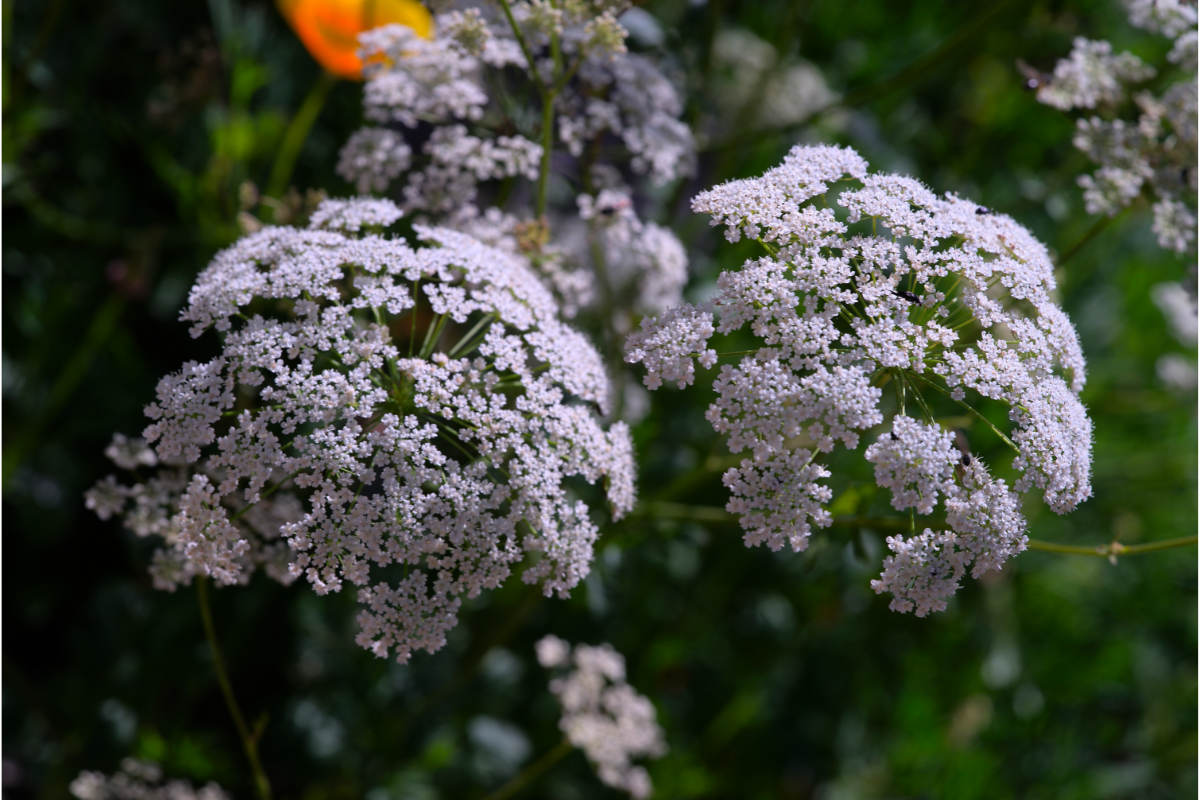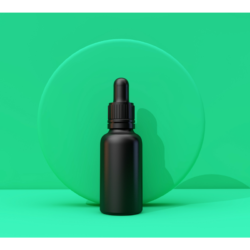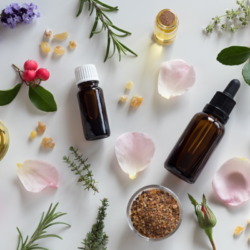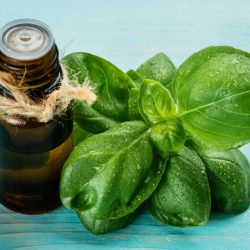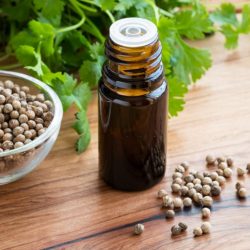Anise, a plant with an enchanting fragrance and a host of virtues, takes us on a fascinating journey through history. Cultivated for over 4,000 years, this natural treasure has travelled down the ages, from the sunny shores of the Mediterranean to the tables of the great thinkers of Antiquity. Today, aniseed continues to attract interest, not only for its distinctive taste but also for its many therapeutic properties. In this article, we explore the rich history and varied uses of anise, a true gift of nature that has captured the hearts and health of mankind over the centuries.
According to decree no. 2007-1198 of 3 August 2007, essential oils on list B must only be dispensed on presentation of a doctor’s prescription. They can only be supplied to the pharmaceutical industry, as their potential undesirable effects (neurotoxicity, causticity, carcinogenicity, etc.) outweigh the expected therapeutic benefits.
What is the history of aniseed?
Anise is native to the eastern Mediterranean basin and North Africa, more specifically the Middle East.Anise has been cultivated in Egypt for at least 4,000 years. Ancient medical texts mention the use of the seeds as a diuretic, for digestive problems and toothache. In traditional Chinese and Hindu medicine, anise already had a reputation for being an aphrodisiac and galactogen.
Aniseed is used in the composition of “theriac”. This is an ancient formulation of around 50 ingredients, including a significant concentration of opium. It was reputed to have tonic properties and to be effective against toxins, venoms and specific pains.
What was said about aniseed in Antiquity?
In classical antiquity, anise was found on tables and in medicine cabinets. In the time of Pythagoras and then Hippocrates, its ability to help women give birth more easily by inhaling its fragrance was praised. But history has forgotten all about them. They were even used to make anti-venom tablets and amulets that were placed under pillows to ward off bad dreams.
In the first century AD,Dioscorides wrote that aniseed “ warms, dries and dissolves, eases breathing, relieves pain, promotes urinary elimination and quenches thirst ” . He went on to say that anise makes breathing easier, relieves pain and quenches thirst. These claims are still valid today. It must therefore have been widely used at the time.
As for Pliny the Elder, he states that it has ” the power of sleep and the youth of the face” On another note, around 70 AD, he described its oestrogenic properties! It was favoured by Benedictine monks from the 8th century onwards.
The Romans loved aniseed because it made digestion easier. They used it to stuff a small cake, which they usually served at the end of gastronomic orgies. The Greeks called it tragion, while the Romans called it pimpinella (a word that also refers to burnet, which has nothing to do with aniseed).
According to some Indian authors, knowledge of this substance dates back to the fifth century B.C. As it appears in the Vedas, it could be even older. Ayurveda and traditional Chinese medicine made use of it and already indicated the galactogenic role of aniseed.
How was it used in the Middle Ages?
It was widely used in the Middle Ages, thanks to Charlemagne who ordered its cultivation in 812.
In Burgundy, when the Abbey of Flavigny was founded in 719, Benedictine monks invented the famous bonbon,Anis de Flavigny, made from an aniseed coated in sugarsyrup. Today, it is flavoured with a range of different fragrances, including aniseed, violet, rose, liquorice and mint. It is thought to be France’s oldest sweet.
In 1305, in England, aniseed was one of the spices taxed to repair London Bridge. In 1453, it was still under the close supervision of the London Grocers’ Company.
The Middle Ages also evoked the plant’s therapeutic, aromatic and culinary qualities through the Capitulary of Villis, the School of Salerno and Albert the Great.
Cultivated extensively in Alsace in the 19th century, it is true that this “hot seed” (the term used to describe coriander, fennel, aniseed and caraway) did not originate in these cold lands. It originated in the Near East (Syria, Turkey…). So, depending on where it is grown, the colour of its seeds can change, as can its aromatic qualities. For example, Tunisian aniseed is said to be green and sweet, while Russian aniseed is blackish and of poor quality.
What are the characteristics of this plant?
Anise, whose botanical name is Pimpinella anisum L., is a plant in the Apiaceae family (Umbelliferae).
What are the plant’s botanical attributes?
Green anise is a herbaceous plant with an annual or biennial life cycle. It grows to a height of between 50 and 80 centimetres. The structure of this plant includes an erect stem with a hollow centre. The leaves are green and downy. Their configuration alternates along the stem. These leaves, which are initially unsegmented and toothed at the base, gradually become narrower and finer segments as they approach the top of the plant.
In terms of growing conditions, green anise favours warm, sunny environments. It thrives mainly in sandy or chalky soil. Ripe seeds are generally harvested two months after sowing, during the summer. It is harvested in the morning to preserve the flavour of the seeds.
What is the flowering period?
The flowering period is generally from July to August, when the plant develops white flowers. These gather in formations called umbellules, which in turn form umbels made up of 8 to 15 rays. The plant has no involucre.
As far as fruiting is concerned, the achenes produced are oval and elongated, measuring around 2 millimetres in length. They are grey-green in colour and have a narrowed upper end. The achenes are covered in down and contain seeds with a pronounced aroma.
What are the uses of aniseed essential oil?
Aniseed essential oil is the common name given to the essential oil obtained by distillation from the dried, ripe fruit of the Pimpinella anisum L. plant.
How does it work?
Its presumed mode of action depends on the action of its various chemical constituents: trans-anethole (Phenylpropanoids, 82%), monoterpenes (8%, Linalol) and sesquiterpenes (8%; himachalene, beta-bisabolene, zingiberene). The anethole contained in this essential oil is an analgesic, increases pulmonary secretions and stimulates expectoration, and has an oestrogen-like action (dimers of anethole: dianethole and anisaldehyde: dianisoin).
The main active ingredient in green anise is anethole, which makes up around 82% of the essential oil. Experimentally, in the test tube, anethole has demonstrated antibacterial and antimycotic properties (against microscopic fungi). However, no human clinical study has proven the efficacy of green anise or its essential oil. Nevertheless, when green anise essential oil is injected into animals, it produces effects similar to those of injecting femalehormones(estrogens). Furthermore, in sick animals, these injections reduce coughing and intestinal contractions ( spasmolytic effect).
What are the indications?
Its seeds and essential oil are used mainly for their soothing properties on digestive disorders (difficult digestion, bloating, flatulence). It also has an effect on coughs and the symptoms of colds and whooping cough.
Like fennel and star anise, green anise also helps milk to flow after childbirth. Green anise essential oil is used to repel insects, and sometimes for its antibacterial properties.
Traditionally, green anise has also been used to treat irregular periods,urinary tract infections, liver disease and even tuberculosis. It is also considered a tonic that can boost appetite and sexual desire.
What is the dosage?
- Green anise essential oil can be used as an inhalant for colds and bronchitis. Simply dilute a few drops of essential oil in a bowl of boiling water and inhale the vapours. A handkerchief soaked in the oil can also be used to relieve congestion in the respiratory tract.
- To apply the essential oil topically, dilute it in a vegetable oil and massage it into the affected areas. This use has digestive, stomachic, aperitive, carminative, analgesic, vermifuge, tonic and menstrual regulation effects.
- As a mouthwash, mix equal parts aniseed essential oil and Syzygium aromaticum essential oil in a solution of 50 ml water and 50 ml alcoholic solution. A teaspoon of this preparation diluted in a glass of water has a refreshing effect.
In combination with Ocimum basilicum var basilicum essential oil, it is used to relieve digestive and neuromuscular spasms. In synergy with Artemisia dracunculus and Ocimum basilicum var basilicum oils, application to the lower abdomen can relieve menstrual pain.
What are the contraindications to using this essential oil?
A knownallergy to green anise or anethole, or to any related plant such as celery, cumin, coriander, fennel or dill, contraindicates its use. Pregnant and breast-feeding women, as well as young children, are advised not to use this essential oil. Asthmatics and people on anticoagulant therapy should consult a health professional before use. Due to its oestrogen-like action, its use should be avoided in cases of hormone-dependent cancers. This essential oil is neurotoxic and abortifacient.
What does the EMA think about Anise essential oil?
The HMPC has concluded, on the basis of prolonged use in Europe, that aniseed essential oil preparations are effective in treating mild symptoms of indigestion, including bloating and flatulence. These preparations also act as expectorants for coughs associated with upper respiratory tract infections.
Only adults may apply these medicines, and the duration of administration should not exceed two weeks. If symptoms persist or worsen, you should consult a qualified health professional.
The HMPC’s assessment of aniseed essential oil preparations for the treatment of indigestion and coughs is based on their classification as ‘traditional use’. This designation implies that, despite the absence of conclusive data from clinical trials, the efficacy of these phytotherapeutic formulations is plausible. In addition, there is evidence that they have been used safely for a minimum of 30 years, including at least 15 years within the European Union. The HMPC assessment also took into account laboratory studies revealing the relaxing properties of this oil on intestinal muscles and the respiratory tract. The intended use of these medicines does not require medical supervision.
Individuals under 18 years of age, as well as patients allergic to aniseed or to plants of the Apiaceae family (Umbelliferae), in particular cumin, celery, coriander, dill and fennel, should avoid formulations containing aniseed essential oil. Exposure to this oil can cause allergic skin or respiratory reactions.
Quiz on aniseed essential oil
Are you curious to know more about the secrets of aniseed essential oil? Put your knowledge to the test with our little quiz! Whether you’re an aromatherapy expert or simply a fan of the natural benefits of plants, this quiz is a fun way to learn more about this fascinating essential oil. Answer the questions, discover some interesting facts and share your score in the comments to see who knows the most about the mysteries of aniseed essential oil. Ready to go? Let’s go !
- What is the botanical family of the plant from which aniseed essential oil comes? a) Lamiaceae b) Apiaceae c) Asteraceae
- What is the main chemical component of aniseed essential oil? a) Linalool b) Anethole c) Caryophyllene
- What is one of the main uses of aniseed essential oil? a) Treatment of acne b) Relief of digestive disorders c) Hair stimulant
- What precautions should be taken when using aniseed essential oil? a) It can be used without restriction. b) Pregnant and breast-feeding women are advised not to use it. c) It should be consumed undiluted.
- What effect has aniseed essential oil shown in animal studies? a) Anti-inflammatory effect b) Sedative effect c) Effects similar to female hormones
[ Answers : 1-b, 2-b, 3-b, 4-b, 5-c ]
Now that you’ve tested your knowledge of aniseed essential oil, we invite you to share your answers and score in the comments! It’s a great way to learn more and see how your knowledge compares with that of others. Don’t hesitate to discuss the questions and share your own experiences or advice on using aniseed essential oil. Your feedback is invaluable and will enrich the discussion on this fascinating subject. So, what’s your score?
References:
https://theses.hal.science/tel-01222964
https://www.ncbi.nlm.nih.gov/pmc/articles/PMC3405664/
https://www.ncbi.nlm.nih.gov/pmc/articles/PMC10347090/
https://pubmed.ncbi.nlm.nih.gov/22926042/

